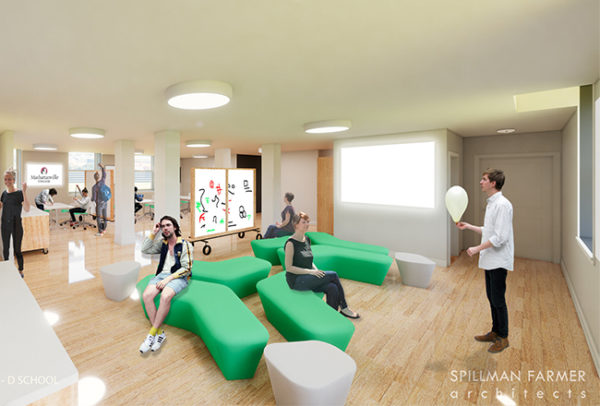Manhattanville College will launch next year a center focused on infusing a multidisciplinary creative process known as design thinking into the college”™s undergraduate and graduate programs.
The college announced in a June 13 press release the formation of what it”™s calling the Manhattanville Center for Design Thinking. By fall 2019, Manhattanville officials said the new center will launch on campus and design-thinking principles will be integrated into its undergraduate and graduate courses.

So what exactly is design thinking? The college describes it as a problem-solving approach that helps to “explore, examine and resolve challenges in a range of academic disciplines.”
The center would have students work in teams in a lab-like environment to solve real world problems, drawn from the Manhattanville”™s alumni network and its range of corporate neighbors in Fairfield and Westchester counties. Under the college”™s vision, students would work with faculty and staff from a range of disciplines and backgrounds to examine issues and prototype and test different solutions.
Michael Geisler, president of Manhattanville College, said the center will help the college prepare its students for productive careers.
“The job market requires a highly educated, flexible workforce that can collaborate with colleagues from different cultural and disciplinary backgrounds who possess different problem-solving skills that can quickly, and with relative ease, adjust to rapidly shifting market demands and working environments,” Geisler said in the announcement. “That is the future for which the Manhattanville Center for Design Thinking will educate and prepare Manhattanville students.”
Manhattanville is partnering on the center with IDEO, an international design and consulting firm. College officials said the firm will guide Manhattanville in its quest to become “a design-led institution.”
IDEO is working with college faculty to help prepare for the full launch of the institute next year. Becky Bermont, IDEO”™s portfolio director, described the college’s faculty and staff as “open-minded collaborators, willing to roll up their sleeves to become skilled practitioners of design thinking and, most importantly, work together to address student needs in innovative ways.”
The college will dedicate space to the center. An 1860 building behind Reid Castle, known as the President”™s Cottage, will be renovated under a design by Pennsylvania-based Spillman Farmer Architects.
The 7,850-square-foot, two-story center will feature four classrooms, a fabrication lab, director”™s office, kitchen and dining area and lounge.
Manhattanville said its approach to design thinking will differ from existing programs because it will train students in both graduate and undergraduate programs, while also infusing traditional disciplinary approaches, such as a major in physics or business.
The school said its goal is to “train all students, regardless of their professional direction, in using the techniques of cross-disciplinary collaboration and design-thinking empathy and observation to any occupation.”
The college provided a list of three pillars that design thinking is based on:
Ӣ The recognition that different types of problem-solving skills are needed in combination with different skill sets and perspectives to achieve results that customers or end-users will value and accept.
Ӣ Empathy-led approaches using techniques to train students in understanding what customers and users actually need (which may not be initially revealed or known) and will accept.
Ӣ The process of repeated prototyping and market testing, where students learn that they need to fail and fail again before they eventually construct a product (or a procedure, or a new process or flow) that will prove successful.
Christine Dehne, Manhattanville”™s School of Arts & Sciences dean said design thinking provides students “with an opportunity to practice empathy, as well as hone research, analysis and critical thinking skills. These are key components of a liberal arts education as well as the skills most frequently cited as valuable by employers.”




















